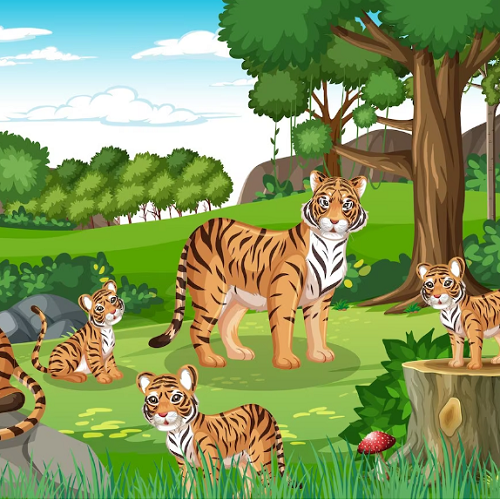Loading...


KEDARNATH WILD LIFE SANCTUARY
Kedarnath Wildlife Sanctuary is located across the Chamoli and Rudraprayag districts of
Uttarakhand. The sanctuary is named after the Kedarnath temple, a popular Hindu Temple situated
on the northern border. It is also popularly referred to as Kedarnath Musk Deer Sanctuary. It comes
under IUCN IV grade (Managed Nature Reserve) by Bio geographical Province.
Notification
Wildlife Sanctuary: 21 January, 1972
Flora
Vegetation cover: Mixture of Sub-tropical forest, alpine forest and sub-alpine forest and temperate forest.
Plant and tree species: Chir, Oak, Birch, Pine, Alpine And Numerous Rhododendron Meadows.
Fauna
Flagship Species: Himalayan Musk Deer
Other species: Snow Leopard, Himalayan Black Bear, Indian Muntjac, Red Giant Flying Squirrel, Royle's Mountain Vole, Himalayan Pit Viper And Others.
Avian Fauna
Nepal Tree-creeper, Grey-cheeked Warbler, Himalayan Monal, Koklass Pheasant, Little Pied Flycatcher, etc
Getting there
Jollygrant Airport, Dehradun (about 252 km) is the nearby airport. Closest railway station is at Rishikesh, Dehradun (nearly235 km). By roadway two major approaches to the Kedarnath sanctuary are from Guptkashi (approximately 15 km away) and from Gopeshwar (around 20 km away).
Tourist Information
Chopta is one of the prime entry points to Kedarnath wildlife sanctuary. PWD Inspection Houses and Tourist lodges are available for accommodation with prior bookings. Dharamshalas maintained by the Temple Committee at Dugalbitta, Kedarnath, Trijuginarayan, Gaurikund and Mandal and a guest house at Sonprayag can be availed for staying.
Tourists can visit the famous Kedarnath temple and other Hindu temples located in and around the sanctuary area.
Additional Information
Location: Kedarnath wildlife sanctuary, Gopeshwar, Chamoli Distt., Uttarakhand
Area: 975 sq km
Temperature: 10°C to 25°C
Best visiting time: April and June // September to November
Visiting timings: 6:00 am to 6:00 pm (subject to change)
© Arked
© Arked
Notification
Wildlife Sanctuary: 21 January, 1972
Flora
Vegetation cover: Mixture of Sub-tropical forest, alpine forest and sub-alpine forest and temperate forest.
Plant and tree species: Chir, Oak, Birch, Pine, Alpine And Numerous Rhododendron Meadows.
Fauna
Flagship Species: Himalayan Musk Deer
Other species: Snow Leopard, Himalayan Black Bear, Indian Muntjac, Red Giant Flying Squirrel, Royle's Mountain Vole, Himalayan Pit Viper And Others.
Avian Fauna
Nepal Tree-creeper, Grey-cheeked Warbler, Himalayan Monal, Koklass Pheasant, Little Pied Flycatcher, etc
Getting there
Jollygrant Airport, Dehradun (about 252 km) is the nearby airport. Closest railway station is at Rishikesh, Dehradun (nearly235 km). By roadway two major approaches to the Kedarnath sanctuary are from Guptkashi (approximately 15 km away) and from Gopeshwar (around 20 km away).
Tourist Information
Chopta is one of the prime entry points to Kedarnath wildlife sanctuary. PWD Inspection Houses and Tourist lodges are available for accommodation with prior bookings. Dharamshalas maintained by the Temple Committee at Dugalbitta, Kedarnath, Trijuginarayan, Gaurikund and Mandal and a guest house at Sonprayag can be availed for staying.
Tourists can visit the famous Kedarnath temple and other Hindu temples located in and around the sanctuary area.
Additional Information
Location: Kedarnath wildlife sanctuary, Gopeshwar, Chamoli Distt., Uttarakhand
Area: 975 sq km
Temperature: 10°C to 25°C
Best visiting time: April and June // September to November
Visiting timings: 6:00 am to 6:00 pm (subject to change)
© Arked
© Arked











